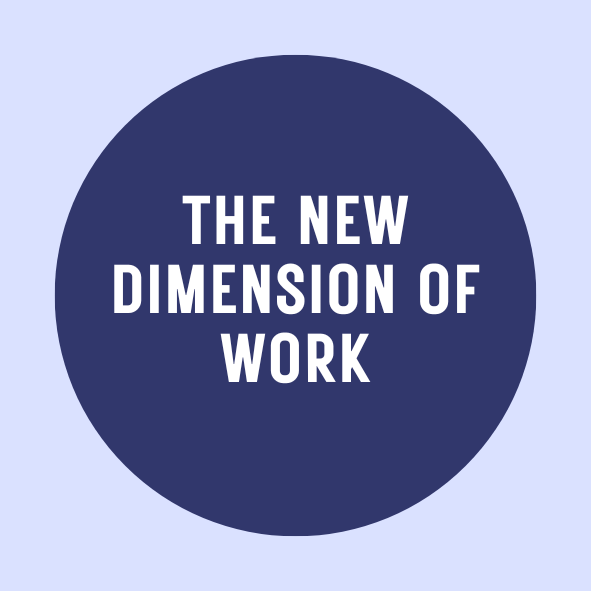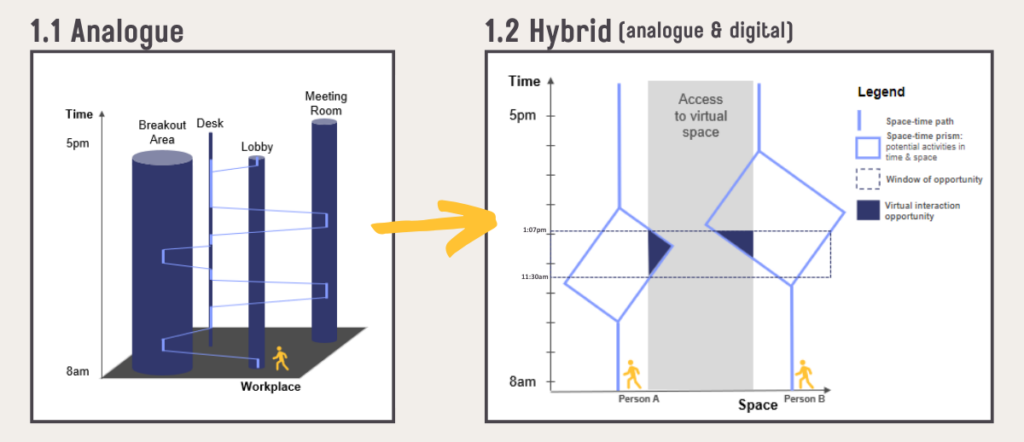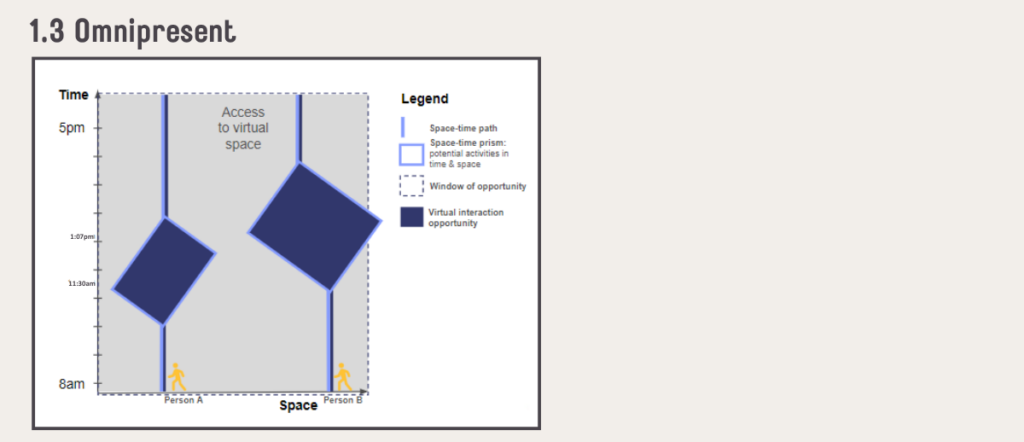
The New Dimension of Work
This edition is a follow-on from the previous newsletter where we delved into time geography, an approach in human geography which provides tools and frameworks to visualise a person’s activities in a geographic context. When it comes to the world of work, time geography can come in handy as it provides insights into the behavioural decisions […]
This edition is a follow-on from the previous newsletter where we delved into time geography, an approach in human geography which provides tools and frameworks to visualise a person’s activities in a geographic context. When it comes to the world of work, time geography can come in handy as it provides insights into the behavioural decisions we make about when and where work could take place.
Since time geography’s birth in the 1960s, the nature of work has evolved significantly. So this naturally leads us to ask the question: ”Would the same principles and models that made sense then, still apply to today’s modern work environment?”
A New Dimension
The fundamental notion that time geography recognises is that humans are bound by spatial and temporal limitations: we can only be in one place at a time and activities occur in specific places for finite periods (1). However, both space and time are social constructs which means that these concepts evolve over time. Therefore, the spatial and temporal limitations that made sense in the 1960’s, when time geography was first constructed, may not make sense anymore in today’s world.
Figure 1.1 below, shows a version of the space-time path model based on the original 1960 model (for more info refer to the previous newsletter). In this model, the person only exists in one dimension; the physical world. However, as we all know very well, in today’s era, our work takes place in more than just one dimension: the physical space as well as the virtual realm. So, how would we adapt the model to fit this new reality? Figure 1.2 shows an adaptation of the original model where ‘access to the virtual space’ is being taken into account:

Figure 1.1: Visualised day in the life of an office worker based on Hägerstrand’s original space-time path model (2) Figure 1.2: Hybrid space-time prism adapted from Hongbo Yu and Shih-Lung Shaw (3)
Figure 1.2 illustrates the hypothetical space-time path of two people, person A and person B. Around 1pm their potential paths are nearly crossing, they are close, but their paths don’t actually meet. Using the original analogue space-time path model, this would mean that no interaction would take place by these two people. However, the grey box in the revised hybrid model showcases access to the virtual dimension. Between 11:30am – 1:07pm, person A and person B both have access to the virtual space and would be able to interact.
The hybrid model in figure 1.2 was created in 2008 (3). Interestingly, in this model ‘access to virtual space’ is still not limitless, and opportunities are only present in certain locations (it’s not across the entire x-axis). Nowadays, you could say that for certain parts of the world, and certain jobs (think knowledge workers), the opportunity to access the internet is close to constant, and therefore the grey box would take up the whole square, like so:

Figure 1.3: Omnipresent space-time model
The above omnipresent world shows that from a space and time perspective, the window of opportunity for person A and Person B to meet is now 24/7. The way we perceive work, interactions, and even the concept of ‘presence’ is undergoing a seismic shift.
The evolution of the time-space model clearly shows that we have more opportunities to cross paths and interact than ever before. Because the opportunities to meet are so vast and limitless, it’s no wonder how many of us feel the burden of this 24/7 ‘interaction opportunity’ on our shoulders! It’s now up to us to create those barriers. We need to be proactive in shaping our daily space-time paths and experiences. What are you doing to protect your time from the virtual vacuum?
Now, aside from the burden of the virtual vacuum, there is also a positive side to it. The virtual dimension brings a whole lot of new and exciting opportunities to the world of work. The future of work is not just about where and when we work, but how we choose to intersect in this ever-expanding multi-dimensional landscape. Next week, we’ll look into new work models by using the time geography philosophy – stay tuned!
Oct 27, 2023
Tica Masuku
|
[🎤Are you looking for a keynote speaker for your next event, company off-site or global summit? I'm currently organising my international speaking calendar for 2025. Please get in touch to discuss the possibilities tica.m@spaceful.com.au]
[💡Would you like to know how I can help you or your organisation apply a human geography informed strategy to your workplace? I'm the Director of Workplace Strategy at Spaceful. We assist organisations design and develop bespoke and evidence-based workplace strategy solutions. You can email me at tica.m@spaceful.com.au]
You'll get...
Thank You for Subscribing!
Website designed by Creative Vibes
2025 © Copyright Tica Masuku